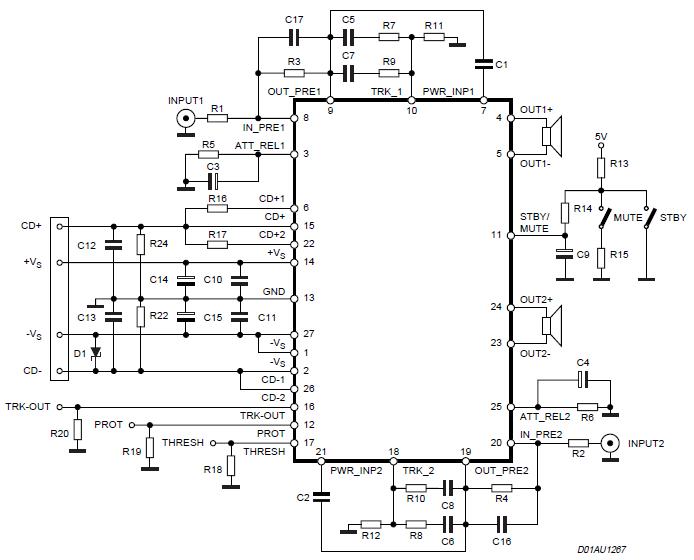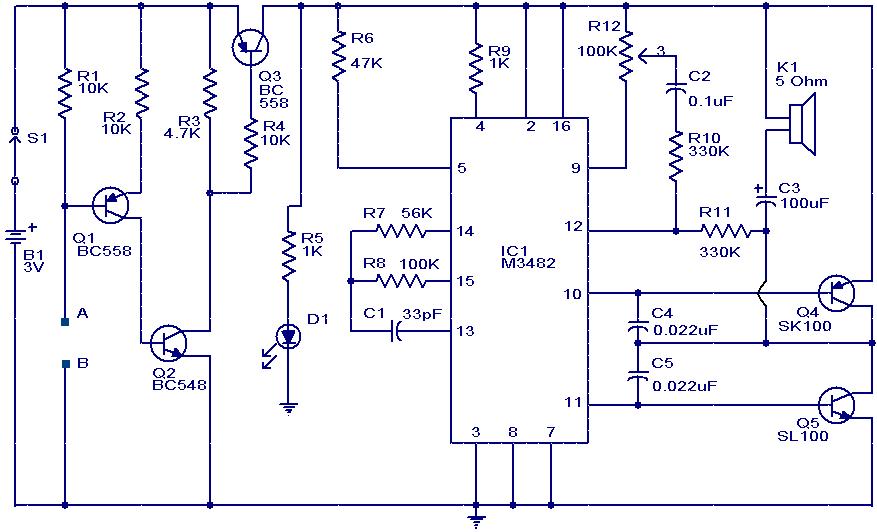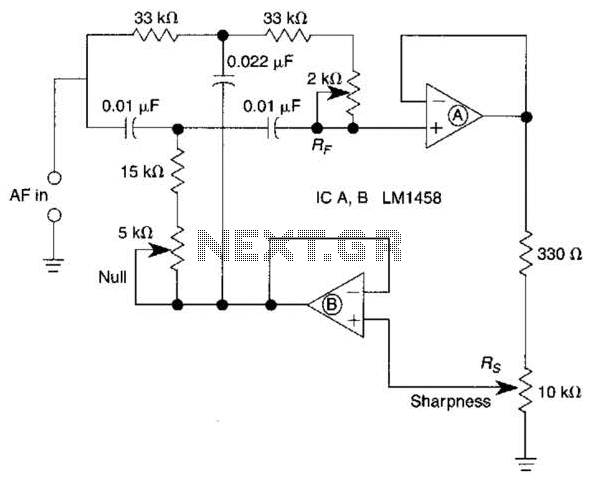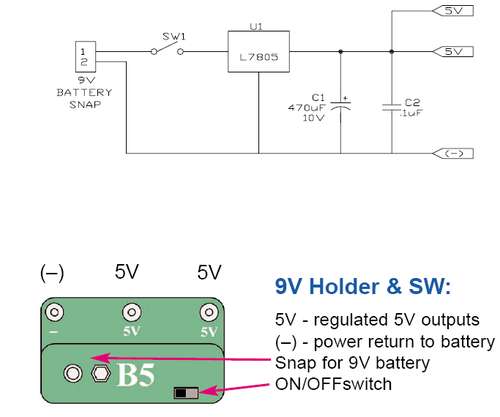
sensitive microphone circuit
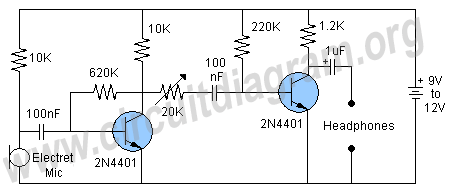
The figure below illustrates a schematic of a highly sensitive microphone circuit designed to amplify faint sounds from a distance. The circuit exhibits significant sensitivity and offers substantial gain to weak audio signals.
The microphone circuit typically consists of several key components that work together to enhance audio signal reception and amplification. At the heart of the circuit is a high-sensitivity microphone element, often a condenser or electret type, which converts sound waves into electrical signals. This microphone is connected to a preamplifier stage, which is crucial for boosting the weak audio signals captured by the microphone.
The preamplifier may utilize operational amplifiers (op-amps) configured in a non-inverting amplifier configuration to achieve high gain while maintaining low noise levels. The choice of resistors in the feedback loop of the op-amp is critical, as they determine the gain of the circuit. Additionally, capacitors may be employed to filter out high-frequency noise, ensuring that only the desired audio frequencies are amplified.
Following the preamplifier stage, the circuit may include a bandpass filter to further refine the audio signals by allowing only a specific frequency range to pass through. This is particularly useful in applications where certain sound frequencies are of interest, such as in wildlife monitoring or surveillance.
Power supply considerations are also essential in designing this sensitive microphone circuit. A regulated power supply is often employed to ensure consistent performance, as variations in supply voltage can affect the gain and overall sensitivity of the circuit. Battery-operated designs may include low-dropout regulators (LDOs) to maximize battery life while providing stable voltage to the circuit.
Finally, the output of the circuit can be connected to additional audio processing equipment or directly to a recording device, depending on the intended application. Proper shielding and grounding techniques are vital to minimize interference and ensure high-quality audio output.
In summary, this sensitive microphone circuit is a sophisticated design that effectively amplifies faint sounds, making it suitable for various applications requiring enhanced audio detection.The figure below shows a schematic of a very interesting sensitive mic circuit which will boost faint sounds from distance. The circuit is quite sensitive and provides good gain to weak audio signals.. 🔗 External reference
The microphone circuit typically consists of several key components that work together to enhance audio signal reception and amplification. At the heart of the circuit is a high-sensitivity microphone element, often a condenser or electret type, which converts sound waves into electrical signals. This microphone is connected to a preamplifier stage, which is crucial for boosting the weak audio signals captured by the microphone.
The preamplifier may utilize operational amplifiers (op-amps) configured in a non-inverting amplifier configuration to achieve high gain while maintaining low noise levels. The choice of resistors in the feedback loop of the op-amp is critical, as they determine the gain of the circuit. Additionally, capacitors may be employed to filter out high-frequency noise, ensuring that only the desired audio frequencies are amplified.
Following the preamplifier stage, the circuit may include a bandpass filter to further refine the audio signals by allowing only a specific frequency range to pass through. This is particularly useful in applications where certain sound frequencies are of interest, such as in wildlife monitoring or surveillance.
Power supply considerations are also essential in designing this sensitive microphone circuit. A regulated power supply is often employed to ensure consistent performance, as variations in supply voltage can affect the gain and overall sensitivity of the circuit. Battery-operated designs may include low-dropout regulators (LDOs) to maximize battery life while providing stable voltage to the circuit.
Finally, the output of the circuit can be connected to additional audio processing equipment or directly to a recording device, depending on the intended application. Proper shielding and grounding techniques are vital to minimize interference and ensure high-quality audio output.
In summary, this sensitive microphone circuit is a sophisticated design that effectively amplifies faint sounds, making it suitable for various applications requiring enhanced audio detection.The figure below shows a schematic of a very interesting sensitive mic circuit which will boost faint sounds from distance. The circuit is quite sensitive and provides good gain to weak audio signals.. 🔗 External reference
Warning: include(partials/cookie-banner.php): Failed to open stream: Permission denied in /var/www/html/nextgr/view-circuit.php on line 713
Warning: include(): Failed opening 'partials/cookie-banner.php' for inclusion (include_path='.:/usr/share/php') in /var/www/html/nextgr/view-circuit.php on line 713
